
Ontario’s public service heads back to the office, meaning more traffic and emissions
For 15 years and counting, my commute from Mississauga to Toronto has been mired by...
Tribal protectors representing members of four Nisg̱a’a villages set up a blockade early Monday morning to stop pipeline vehicles from proceeding past the village of Gitlax̱t’aamiks (formerly New Aiyansh) to where a work camp is being built to support construction of a major natural gas pipeline — Prince Rupert Gas Transmission (PRGT) — in northern B.C. The blockaders reopened the road after members of the RCMP arrived at the location, according to a Nisg̱a’a citizen who was leading the blockade.
The blockade, about 100 kilometres north of Terrace, B.C., on the western end of the Nass Forest Service Road, is the second direct action in opposition to the pipeline in a week. Last Thursday, Gitanyow Hereditary Chiefs set up a blockade at the eastern end of the remote road where it meets Highway 37, and burned a 2014 agreement the chiefs signed with Calgary-based pipeline company, TC Energy, in support of the project, saying the project’s environmental assessment is outdated. That blockade remains in place.
The 800-kilometre pipeline project was approved by the B.C. government in 2014, based on environmental studies conducted in the early 2010s. Originally owned by TC Energy, the same company that built the Coastal GasLink pipeline, the project was recently sold to the Nisg̱a’a Lisims Government and Texas-based Western LNG.
Last week, TC Energy told The Narwhal it had “completed the sale of PRGT entities to Nisg̱a’a Nation and Western LNG.” Nisg̱a’a Lisims Government was not able to accommodate an interview by publication time and Western LNG did not respond to an emailed request for comment.
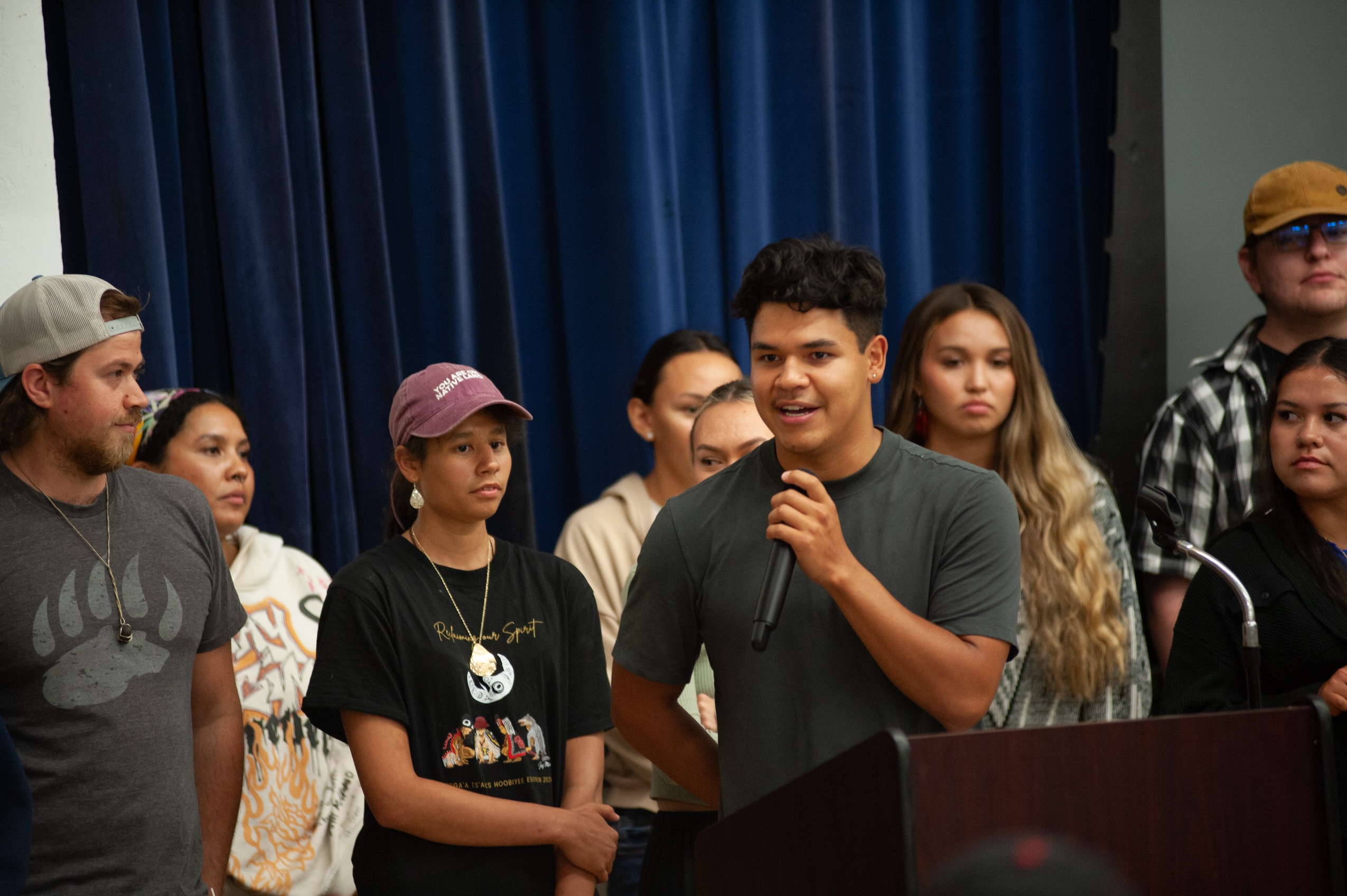
At a youth-led community meeting in the Gitxsan village of Gitanmaax last week, Indigenous leaders from across the northwest, representing Nisg̱a’a, Ts’msyen, Wet’suwet’en, Gitxsan and Gitanyow, expressed solidarity with youth and others opposed to the project.
Richard Cecil Mercer, a Nisg̱a’a citizen who has been collecting signatures from members of the four Nisg̱a’a pdeek (clans) in a petition to stop the Nisg̱a’a Lisims Government from proceeding with the pipeline project, told those gathered how he had spoken with people from across Nisg̱a’a lands who oppose the project.
“We have support from all four communities — from Gingolx, Laxgalts’ap, Gitwinksihlkw and Gitlax̱t’aamiks — and we’re all coming together as tribal members to protect our lands,” he said.
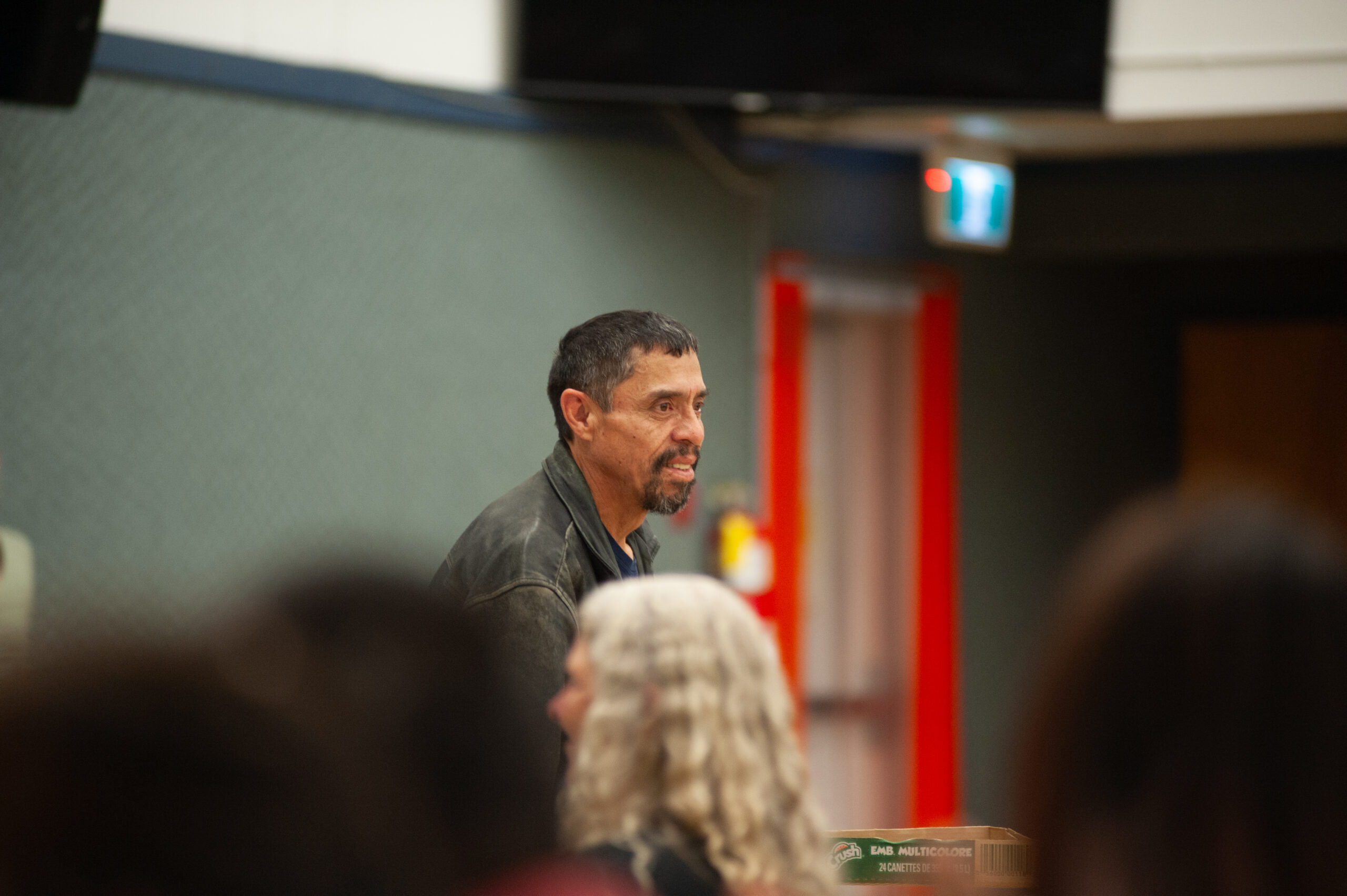
In a message to The Narwhal, Mercer said the brief blockade had interrupted a ribbon-cutting ceremony held by the Nisg̱a’a government and Western LNG at Nass Camp, where workers are gathering as construction is getting underway.
“This will be won,” he said at the event last week. “I guarantee you we will be successful.”
If completed, the Prince Rupert Gas Transmission pipeline will stretch 800 kilometres, from Treaty 8 territories in B.C.’s northeast to the mouth of the Nass River on the Pacific coast. It will be more than 100 kilometres longer than the Coastal GasLink pipeline.
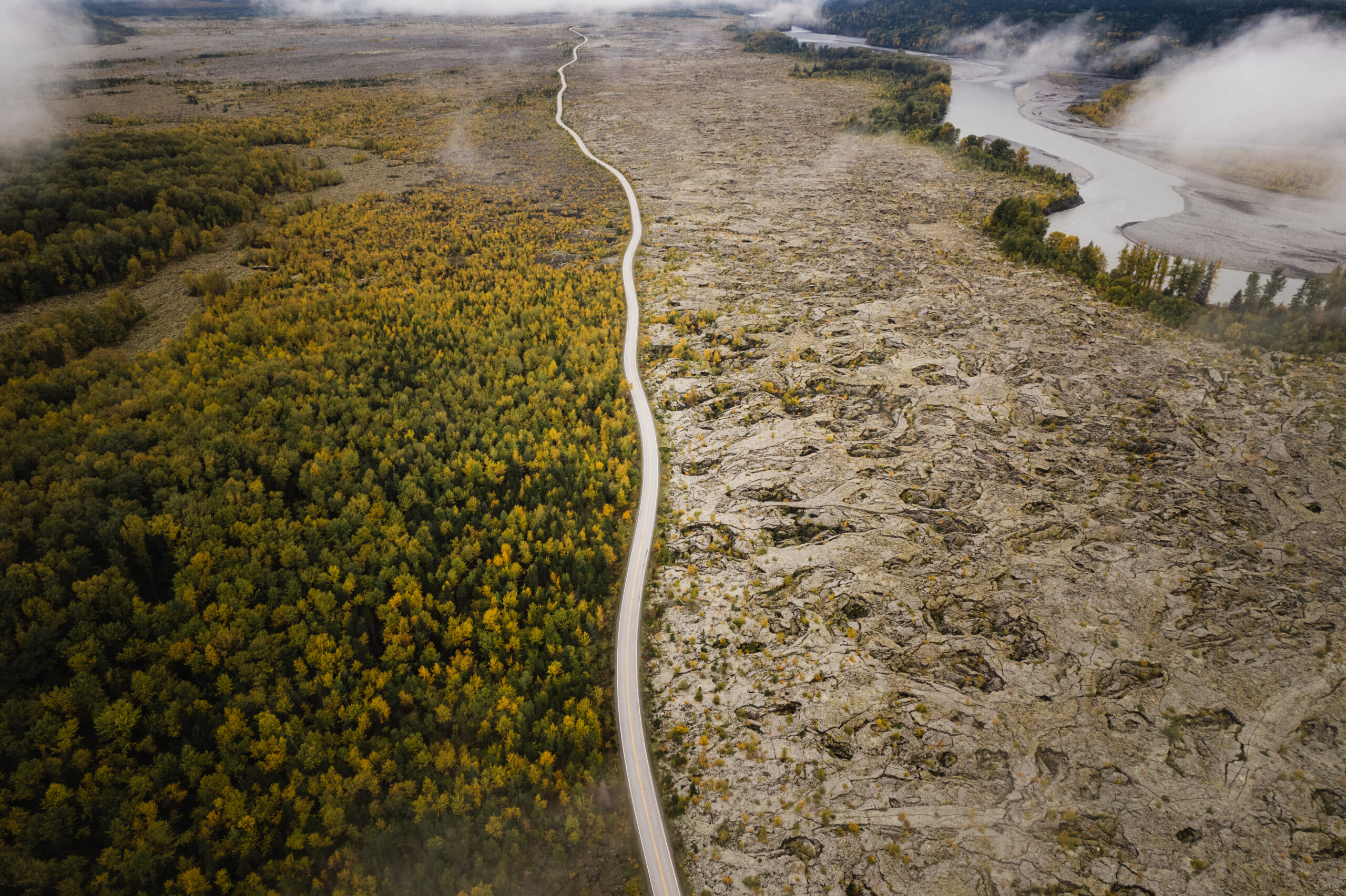
The new pipeline is approved to cross more than 1,000 waterways, including major salmon-bearing rivers and tributaries, and cut a swath through the Nisg̱a’a lava beds, where a volcanic eruption around 250 years ago sent a massive flow of lava across the land, covering two Nisg̱a’a villages and killing more than 2,000 people. The lava beds serve as a “memorial to those who lost their lives and as a reminder of the importance of kwhlixhoosa’anskw (respect) — for both the natural world and the wisdom of the Elders,” according to the Nisg̱a’a Nation website.
The Nisg̱a’a government, Western LNG and Calgary-based Rockies LNG are partners in a proposed floating liquefied natural gas (LNG) facility, Ksi Lisims, set to become the province’s second-largest LNG export project. The project, near the Nass River estuary close to the Alaskan border, is currently undergoing an environmental assessment and has not yet been approved by the B.C. government. The pipeline project is set to end at Ksi Lisims, via a section of pipe laid on the sea-floor. Rockies LNG did not respond to a request for comment by publication time.
If B.C.’s environment minister determines enough work has begun on the pipeline by Nov. 25, the pipeline’s environmental assessment certificate will remain valid indefinitely.
At the meeting in Gitanmaax last week, Simoyget (Hereditary Chief) Yahaan, Donnie Wesley, of the Gitwilgyoots tribe — one of nine allied tribes of the Lax Kw’alaams First Nation — said he’s been in the fight against LNG projects for more than decade, including the Prince Rupert Gas Transmission pipeline.
The pipeline was originally approved to supply the proposed Pacific NorthWest LNG liquefaction and export facility that was to be built on Lelu Island at the mouth of the Skeena River. Yahaan and many other supporters fought fiercely against the proposed project, reoccupying the island to protect juvenile salmon which rely on the estuary. They eventually succeeded in 2017 when the proponent, Petronas, cancelled the project.
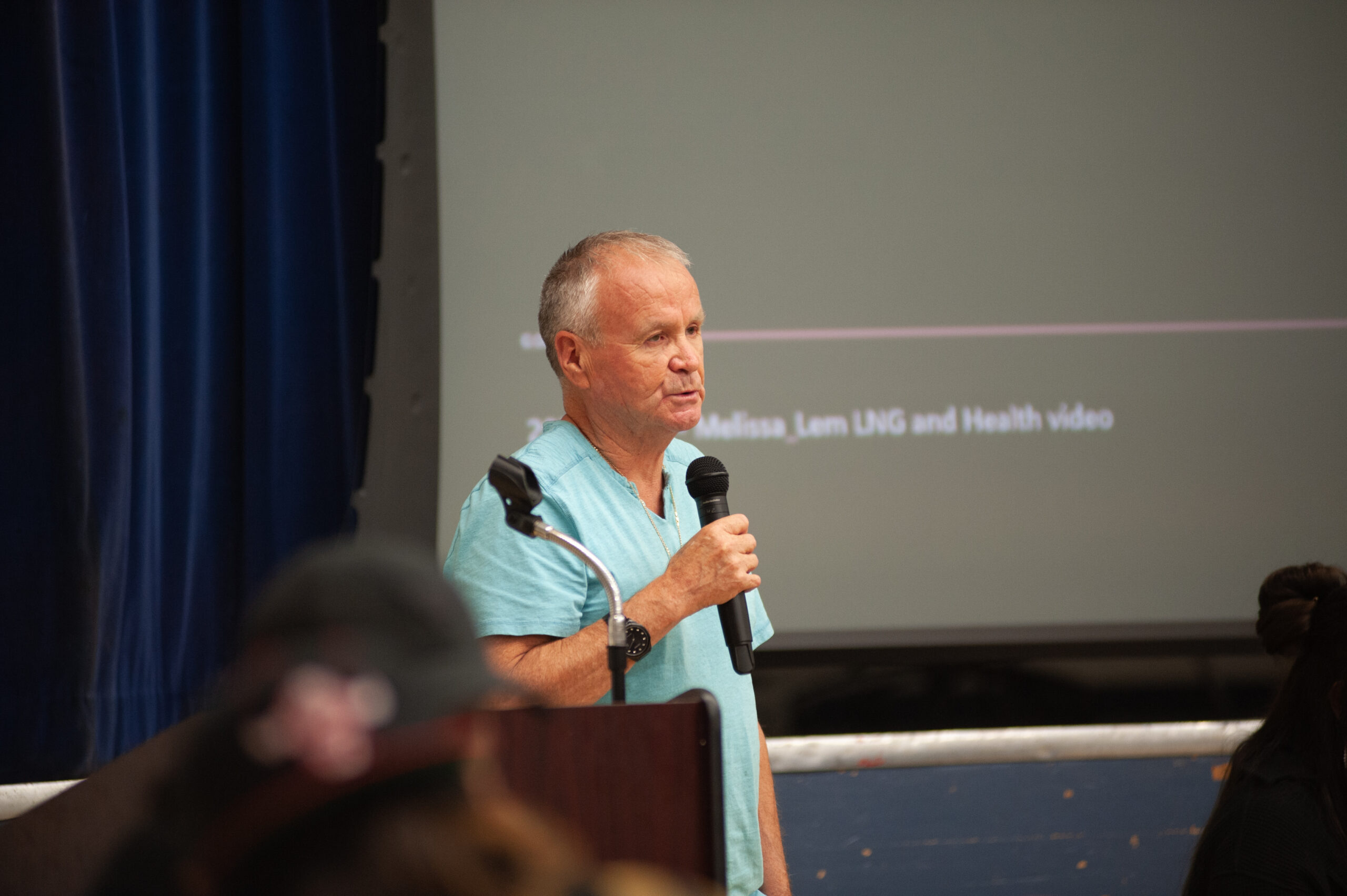
His gravelly voice thick with emotion, Yahaan recounted how the years of fighting cost his son’s life.
“He committed suicide,” he said. “So when you see me up here talking like this, I talk up here with passion. I could have said ‘Fuck you’ to that island and walked away and took the money. I was offered a lot of money to get off of Lelu Island.”
While the pipeline is now intended to terminate at Ksi Lisims, 100 kilometres of the undersea route that would connect it to Lelu Island has not been removed from its provincial permits. Yahaan said even if Pacific NorthWest LNG doesn’t resurface, building a pipeline and gas liquefaction facility upstream would impact fish populations in his territories.
“I’m up here to support every one of you in this room here — what happens to you up here, happens to me.”
Yahaan’s expression of solidarity reflected support from nations across the northwest. When the Gitanyow Hereditary Chiefs burned the agreement and set up the blockade last week, Wet’suwet’en land defenders came to show their support.
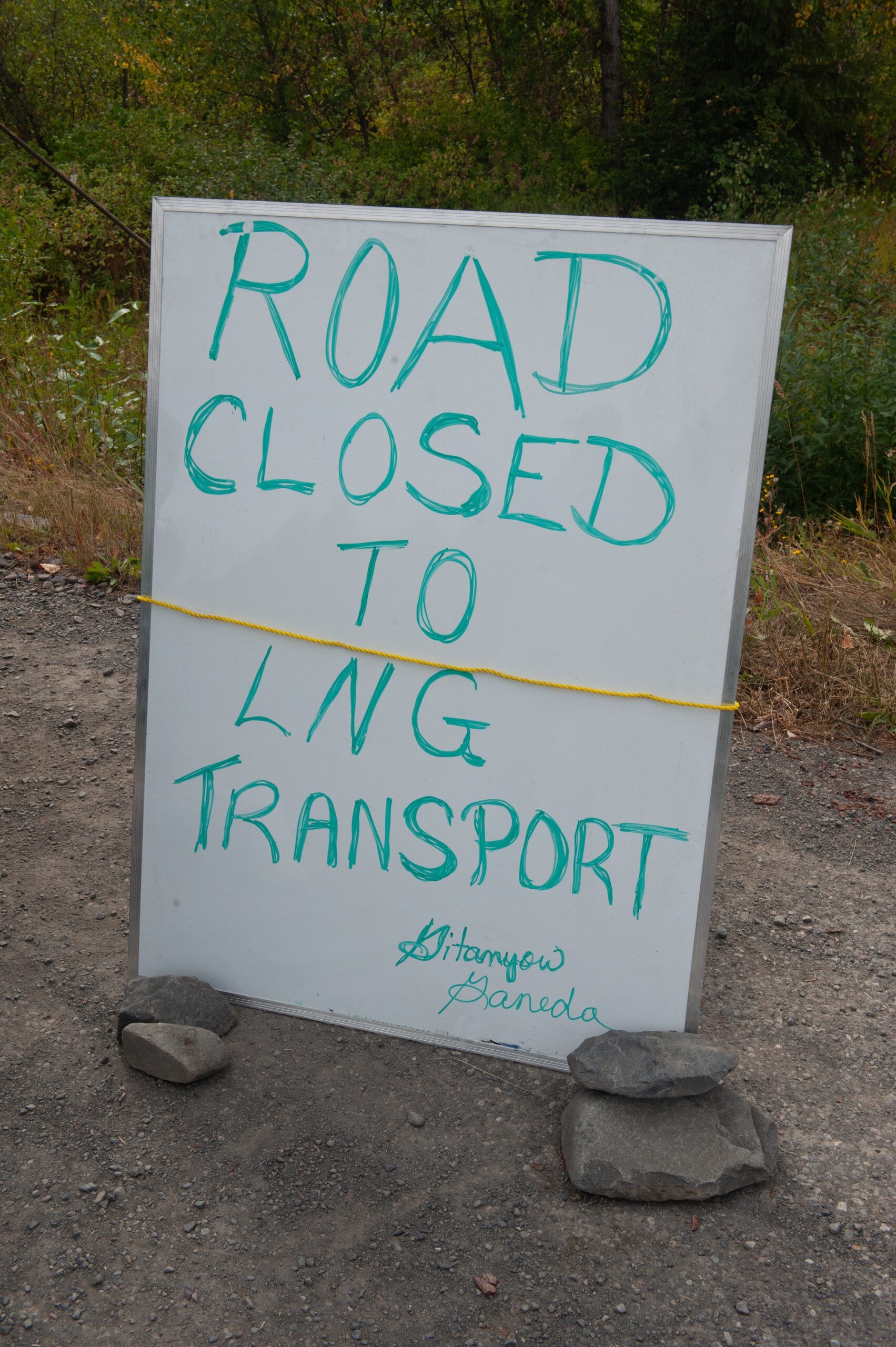
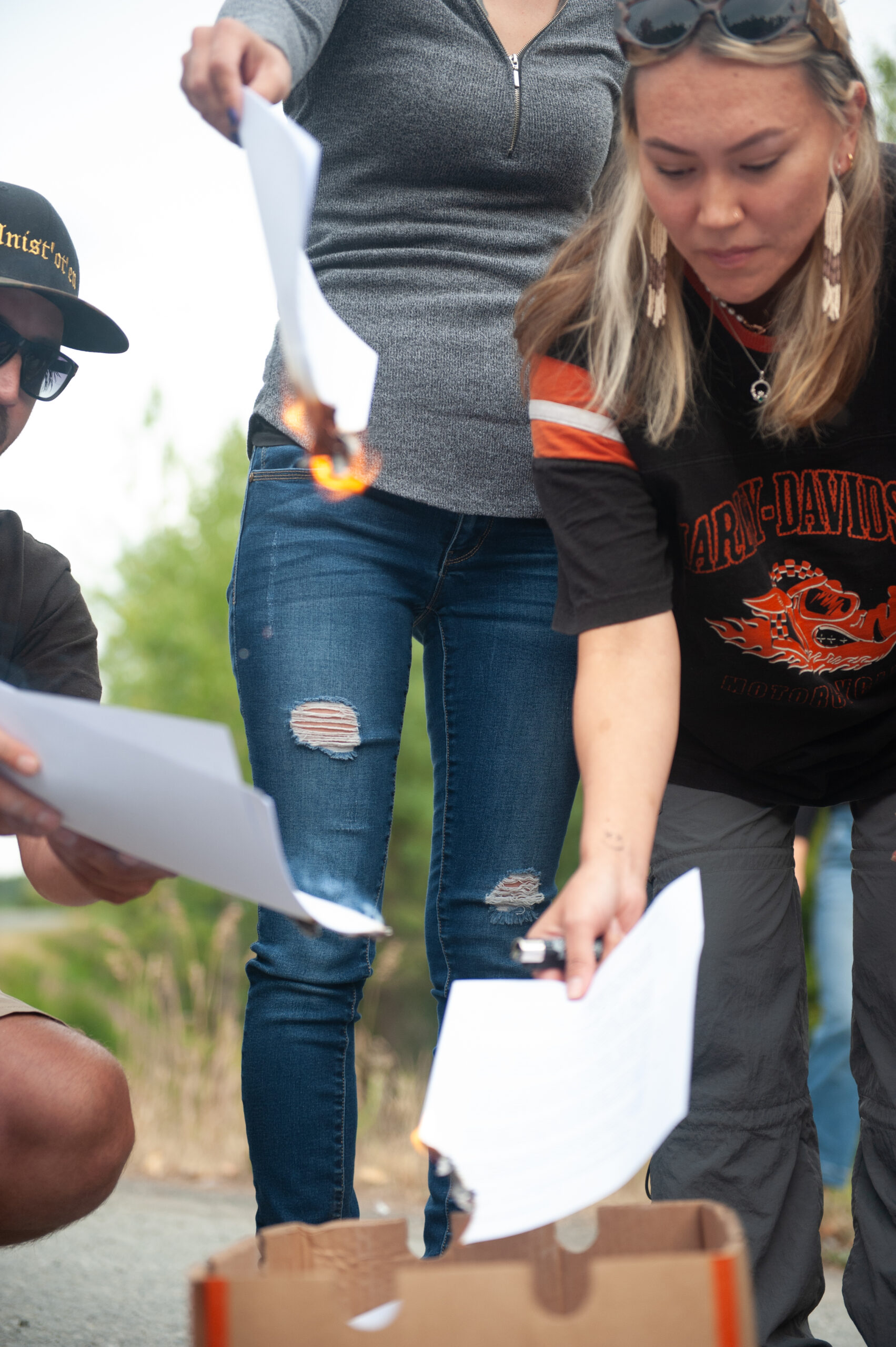
Yara Alec, a daughter of Wet’suwet’en Hereditary Chief Woos, said she and other Wet’suwet’en land defenders are suffering from trauma after years of resisting the Coastal GasLink pipeline. Coastal GasLink was approved around the same time as the Prince Rupert pipeline and opposition to that project led to nation-wide protests that shut down railways and ports in 2020. On Wet’suwet’en territory, dozens of land defenders were arrested during several flashpoints where heavily armed RCMP raided camps set up to reoccupy the land.
The RCMP responses to blockades on Wet’suwet’en territory were catalyzed by a B.C. Supreme Court injunction issued in favour of the Coastal GasLink pipeline. In previous responses to The Narwhal, TC Energy maintained its work on the pipeline was “lawful, authorized, fully permitted and has received unprecedented support from all 20 elected Indigenous communities along our project corridor.” As The Narwhal previously reported, that support did not include consent from the Wet’suwet’en Hereditary Chiefs.
Alec said she and others continue to occupy their lands and are slowly healing after years of conflict.
“All of the violence that the police brought, all of the violence that industry brought, we don’t want to see that happen to you,” she said.
Ardythe Wilson, a Gitxsan Hereditary Chief who holds the name Dimdiigibuu, said her house territory — Wilp Gutginuxw — stands to lose the most if the pipeline is built across Gitxsan lands.
“I grew up on that land,” she said. “We have stood and defended that land many times by different incursions that were proposed, and many of our neighbours have come to our aid.”
“They’re proposing to build right on one of our ancient village sites, that’s where they’re proposing to build a compressor station,” she continued. “Any legal challenge that we can offer up, we will do so. Any political challenge that comes around, we will deal with it. And any direct action that’s required, we’re going to do it — again and again and again, as we have in the past.”
“It really makes me sad and makes me scared, that if people don’t stand up and work together on this, this pipeline is going to go through,” she added. “I hope to see all of you on whatever the heck battleground that we’re going to be on.”
Enbridge Gas will face Waterloo Region in a hearing before the Ontario Energy Board to renew an agreement that would allow the company to continue...
Continue reading
For 15 years and counting, my commute from Mississauga to Toronto has been mired by...

For our last weekly newsletter of the year, we wanted to share some highlights from...

The fossil fuel giant says its agreement to build pipelines without paying for the right...